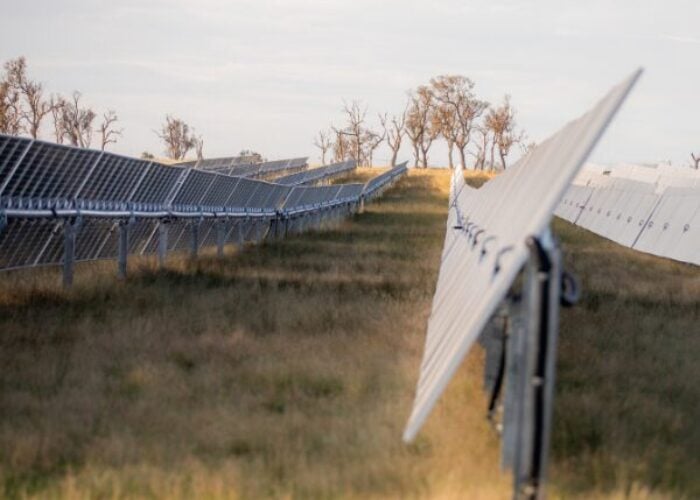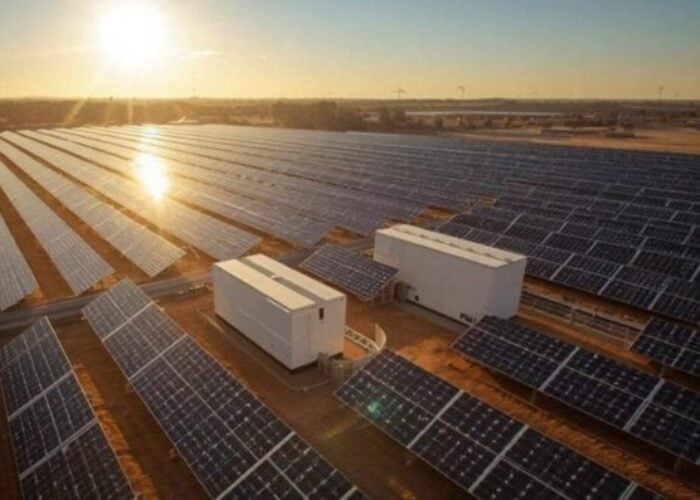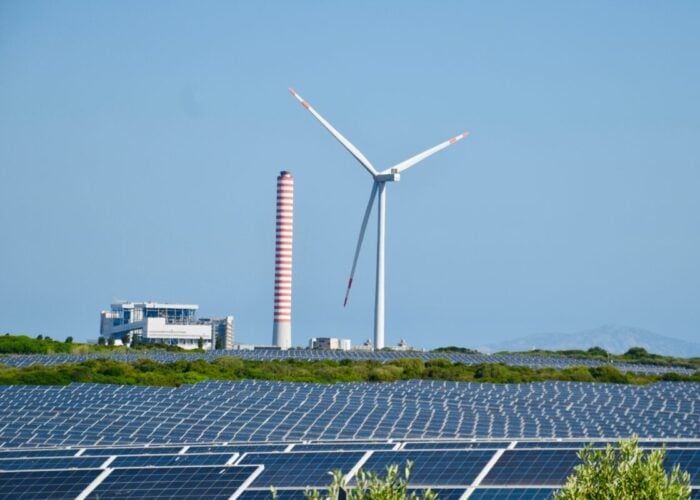The recent announcement by US manufacturer REC Silicon that it would establish a new polysilicon plant with an annual production capacity of 19,000 metric tons (MT) has highlighted an upcoming trend in the polysilicon industry: the rise of fluidised bed reactor (FBR) technology.
Try Premium for just $1
- Full premium access for the first month at only $1
- Converts to an annual rate after 30 days unless cancelled
- Cancel anytime during the trial period
Premium Benefits
- Expert industry analysis and interviews
- Digital access to PV Tech Power journal
- Exclusive event discounts
Or get the full Premium subscription right away
Or continue reading this article for free
Like REC, China-based GCL-Poly, the world's largest polysilicon manufacturer, and SMP, a joint venture between US producer MEMC (now Sunedison) and Samsung Fine Chemicals in South Korea, are also building polysilicon plants using FBR technology with monosilane as the feed gas.
In an FBR, monosilane (silane for short) is injected through nozzles at the bottom of the reactor to form a fluidised bed that carries silicon seed particles fed from above. Silicon deposits from the silane on the seed particles until they have grown to larger granules, which can then be withdrawn from the reactor continuously.
A silane FBR needs only 10% of the electricity that a conventional rod reactor in the established Siemens process consumes. Using silane as feed gas also avoids the energy-intensive off-gas recovery in the Siemens process, which is based on trichlorosilane.
Great potential – but how much of it is realistic?
Hence, REC, GCL-Poly and Sunedison for example promise cash production costs (manufacturing costs without depreciation) of less than US$10/kg for their future FBR polysilicon plants. That would be a substantial gain over the US$14 to 15/kg benchmark of the best incumbent polysilicon manufacturers using the Siemens process.
Moreover, the granular form factor provides additional advantages for making silicon ingots, the next step in the value chain. Mixing polysilicon granules from an FBR with chunks from a Siemens-type rod reactor can shorten the time to fill a crucible by 40% and increase the charge weight by 30%.
The particular value of granules, however, lies in their suitability to continuously recharge single crystal pullers working with the Czochralski (Cz) process. FBR could, therefore, push continuous Cz technology – another innovation that promises both better quality of crystal and a substantial cost reduction over the expensive batch Cz process.
The 2013 edition of the International Technology Roadmap for Photovoltaics (ITRPV), which was prepared by experts from leading PV manufacturers, projects that the FBR process will reach a share of 30% in polysilicon production by 2017, thus nearly quadrupling its 2012 share of 8% within just five years. No doubt, FBR technology offers great potential. But doesn’t all this sound a little bit too good to be true?
Similarities and dissimilarities to the UMG silicon hype
At his point, it might be helpful to take a view back to another contender of the dominant Siemens process: upgraded metallurgical-grade (UMG) silicon.
Its proponents talked pretty big at the peak of the polysilicon shortage in 2007/2008. Eicke Weber, director of the Fraunhofer Institute for Solar Energy Systems in Freiburg, Germany and co-founder of the Californian UMG solar cell manufacturer Calisolar (now Silicor Materials), forecast that UMG silicon could reach a market share of up to 50% (yes: fifty percent) in crystalline solar cells by 2015. Timminco, a Canadian UMG silicon producer now defunct, promised manufacturing costs of C$12/kg (approx. US$11.30/kg then) for 2008.
Both predictions burst like a bubble. UMG silicon technology was not mature yet and the promises were greatly exaggerated. Today the approach still suffers from the bad image it earned at that time with little traction gained.
Could FBR then end up as just another three-letter acronym for a technology that has been overhyped? The answer is not simply yes or no. Unlike UMG, FBR technology has already been proven in commercial production for quite some time:
-MEMC’s 4,200MT plant in Pasadena, Texas (USA) has been running for more than 26 years. It is able to produce electronic-grade material; approximately 60% of its output is used for semiconductor wafers. The plant is at a disadvantage mainly because of its expensive silane manufacturing process via the reduction of silicon tetrafluoride.
-REC Silicon’s FBR plant in Moses Lake, Washington (USA) has been at full steam for four years now and has reached an annual capacity of more than 16,000MT. The plant is quasi MEMC’s opposite: while it has demonstrated low cash costs of US$12/kg, its output is only solar grade with a high metal content. Electronic-grade material will come from REC’s next reactor generation (‘FBR B’), which has been tested on pilot scale for two years.
Electronic-grade purity and upscaling are challenges
There are two basic challenges to the promise of FBR. The first one is: can the technology really reach silicon purity close to or at electronic-grade level at cash costs below US$10/kg? The future will tell us. The second relates to up-scaling. Silicon deposition in an FBR is not easy to control; as the fluid dynamic changes with size, the reactor cannot simply be scaled up one to one from pilot to industrial scale.
SMP, the Samsung/Sunedison joint venture, will use high-pressure reactors which Sunedison claims to be six times more productive than MEMC’s older FBR generation in Pasadena. With such a technology leap, teething problems are bound to occur. It is thus not surprising that both SMP and GCL-Poly have already experienced delays with their FBR projects:
The start-up of SMP's 10,000MT FBR plant was originally announced for May 2013. In July 2013, however, the explosion of a water tank during a stress test killed three employees. Ramp-up of the plant was first postponed to late 2013, then to early 2014; now it is slated for late this year.
After GCL-Poly developed its own FBR technology in record time, it planned to bring the first 10,000 MT phase of its new FBR plant on stream in the first quarter of 2014. Meanwhile, the commissioning has been pushed back to the second half of this year as well.
In light of these facts, the ITRPV forecast of a 30% market share for FBR in 2017 does not appear realistic. Even if SMP, GCL-Poly and REC Silicon all have successfully ramped up their new plants by then, the share will at best double from 8% in 2012 to 16% in 2017. Potential other FBR projects will not be completed overnight.
Risk for REC Silicon’s joint venture in China
As REC Silicon does not have sufficient funds to expand its FBR plant in Moses Lake on its own, it is taking a route very similar to the asset-light approach of Sunedison: saving capital expenditure through a joint venture – in this case with Shaanxi Non-Ferrous Tianhong New Energy in China – and financing its equity share in the joint venture through revenues from licensing fees.
There were early indications that REC Silicon would choose a Chinese partner. Already in May 2012, at the 6th SNEC PV Power Expo in Shanghai, CEO Tore Torvund outlined the advantages of a location in China. The new FBR plant will benefit from low labour and raw material costs and allow REC to produce close to its customers in the world's largest market for polysilicon. Thus, the company will also avoid heavy punitive duties imposed on polysilicon imports from the United States.
All these advantages come at a price, however. China does not have a good reputation for protecting intellectual property although the situation is said to have improved in recent years. There remains a risk for REC that its FBR know-how will leak out over time. We will see what happens when the first employees leave the joint venture and take their knowledge to another place.





